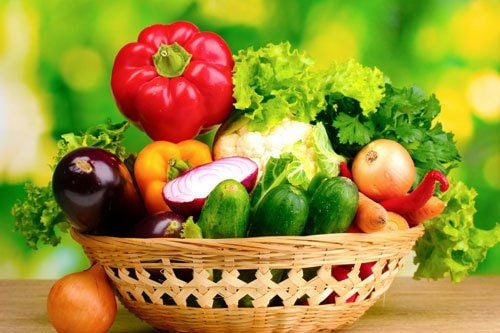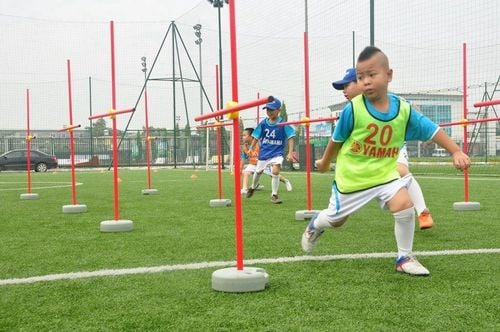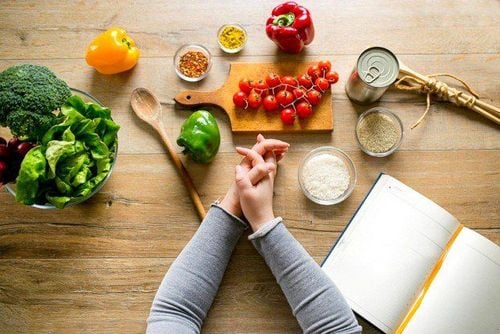This is a common question for many people when starting this sport. First, you need to determine the purpose of cycling, the amount of cycling you can or need to do in a day. Additionally, it depends on what you want to achieve. The article below will help you determine the appropriate time and distance to cycle.
1. How to Cycle Properly?
Cycling is an excellent exercise method for cardiovascular health. An average cycling session burns about 400 calories per hour. Additionally, it strengthens the lower body, including the legs, hips, and buttocks. If you want a gentle exercise for your back, hips, knees, and ankles, this is a great choice.
We can cycle outdoors on roads, bike paths, or mountain trails. Indoors, we can train on a stationary bike or buy a stand, called a home trainer, for our outdoor bike. If you are a beginner, choose a flat road to cycle. When ready for more challenging tasks, and to focus on the upper body, try cycling on steeper roads. You can also do this on trails and various rugged terrains. Mountain biking is more challenging because you have to navigate hills and surfaces, thus engaging the upper body. It is more of a full-body workout compared to road cycling, which primarily targets the lower body.
Plan to cycle for 30-60 minutes, 3-5 days a week. Start each ride with a light warm-up. Cycle at a slow, gentle pace for 5-10 minutes. Then, increase the speed to start sweating. If you are on a stationary bike, just change the settings for a faster pace. When ready to finish, spend another 5 minutes cooling down by cycling at a slower pace.
What Can Cycling Bring?
Intensity Level: High
Cycling increases our heart rate almost equivalent to running and burns a lot of calories. It is also a relatively safe exercise method. It does not put much pressure on the joints, which is helpful if you are in the process of getting back in shape or have joint issues.

Affected Areas
- Bones and Joints: Yes. Your bones and joints will become stronger from cycling.
- Arms: No. This exercise does not specifically target the arms.
- Legs: Yes. This is a great exercise for the legs, especially the glutes and hamstrings.
Glutes: Yes. The glutes and hips will get a serious workout from cycling. - Back: No. This exercise does not specifically target the back. If you want to work on the upper body, try mountain biking. It will engage the back muscles as you navigate up and down hills.
Type
- Flexibility: No. This exercise does not focus on flexibility.
- Cardiovascular: Yes. Cycling is a good cardiovascular exercise.
- Strength: Yes. The large muscles of the lower body will be strengthened by cycling.
- Sport: Yes, if we are competing in a race.
- Low Impact: Yes. This is a low-impact exercise that does not put much pressure on the joints.
Other Things to Know
- Cost: If you do not own a bike, you may need to buy a new or used one. In some places, you can also rent one.
- Good for Beginners? Yes. Even if you have not cycled in many years, you can get back into it right away. If you are overweight, cycling is a good option as it can support weight loss effectively.
- Outdoors: Yes. Cycling is an ideal outdoor exercise.
- Indoors: Yes. If you have a stationary bike or a home trainer, you can cycle indoors.
- Necessary Equipment? Yes. You will need a bike (visit your local bike shop to get the right size). A helmet is mandatory for safety. You might also try padded cycling shorts, which can make riding more comfortable. Gloves can protect your hands from rubbing against the handlebars.
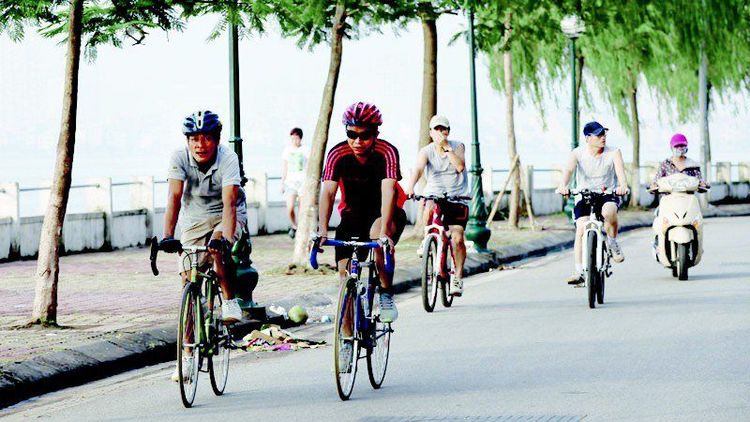
Cycling is also ideal as a cardiovascular workout. It provides a low-impact exercise while helping to build strong legs and improve cardiovascular health. In fact, anyone can do it. It is great for beginners. And we can increase the intensity as our fitness level improves, making it a challenging workout even for advanced exercisers.
If you want to cycle outdoors but feel a bit unsteady, start with indoor cycling to build some muscle strength for stability. When ready, practice outside but start slowly. Always wear a helmet when cycling outdoors. Head injuries are one of the most common cycling injuries when people skip protective measures.
Since cycling is a low-impact exercise, it is ideal for people with arthritis in the hips, knees, and ankles or those recovering from joint injuries. Additionally, it helps build stronger leg muscles, providing more support for the joints and reducing pain. For those with back issues, they can still incorporate cycling into their routine but should find another form of exercise to strengthen the bones and improve flexibility. For pregnant women, focus on indoor cycling. A stationary bike provides stability to prevent falls.
2. How Long and How Many Kilometers Should You Cycle Each Day?
Cycling is not only fun but also a great form of aerobic exercise. Regularly cycling for at least 30 minutes a day helps with weight loss and maintaining shape. We can achieve many health benefits through daily cycling, such as improving cardiovascular health, enhancing bone health, and increasing muscle strength and tone. Of course, once you decide to train for a balanced body, ensure the time and distance each day to achieve your goal. Aim for at least 150 minutes of cycling per week to maintain shape or increase cycling time to 30 to 45 minutes a day for weight loss and other health benefits.

Experts recommend that adults aged 18 to 64 need at least 2.5 hours of moderate-intensity physical activity each week to achieve and maintain good physical health. Cycling for at least 30 to 45 minutes a day helps with weight loss and provides other health benefits. Additionally, you should supplement with strength training exercises at least twice a week. You can meet your daily cycling distance outdoors or use a stationary bike at home or in the gym.
When training with a bike, you should cycle hard enough to raise your heart rate to a level beneficial for cardiovascular health. Another measure of exercise intensity is heart rate. When starting, aim for a heart rate of 40% to 50% of your maximum heart rate. Over time, increase this number to 70% of your maximum heart rate. Once stable, cycle fast enough to maintain that heart rate when completing your daily cycling distance.
For many people, maintaining shape means keeping the lost weight from returning. Cycling burns many calories, helping control weight. Counting the calories you burn while cycling along with what you eat is a helpful way to stay on track. The calories you burn cycling for 30 minutes a day depend on your weight, cycling speed, and duration.
For example, if you weigh about 60kg, you burn about 354 calories per hour cycling at 15-18 km/h. A person weighing 80kg will burn 490 calories per hour at that speed. At a speed of 20-25 km/h and a weight of 60kg, you burn 590 calories, and a person weighing 80kg will burn 817 calories per hour. To manage weight, how much you should cycle each day depends on the calories you want to burn each week.
Part of maintaining shape is minimizing injury risk. Cycling for 30 minutes a day strengthens leg muscles and the cardiovascular system, but only cycling will limit upper body development. You can achieve better fitness and reduce injury risk by combining upper body strength training exercises. It is also important to cycle with proper posture and a well-fitted bike. Your bike should be the right size and adjusted to your height and body proportions. This way, you minimize pressure and reduce injury risk.
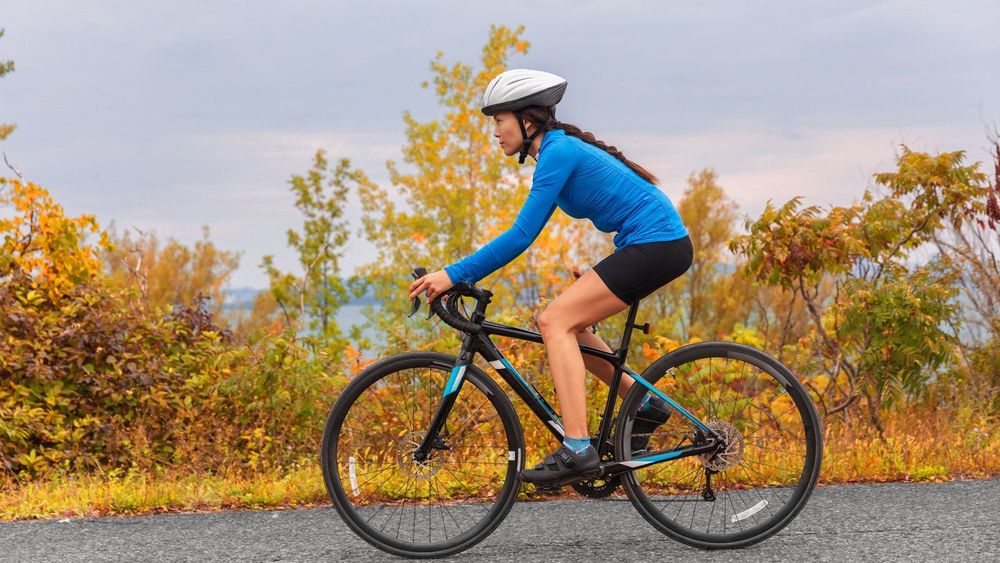
Cycling has long been considered an excellent sport, bringing many health benefits to everyone. It not only supports cardiovascular health, bone health, and muscle strength but also helps with weight loss and maintaining shape. Aim for at least 150 minutes of cycling per week to maintain shape or increase cycling time to 30 to 45 minutes a day for weight loss and other health benefits.
To arrange an appointment, please call … or make your reservation directly HERE. You may also download the MyVinmec app to schedule appointments faster and manage your reservations more conveniently.
Reference sources: livestrong.com, webmd.com



